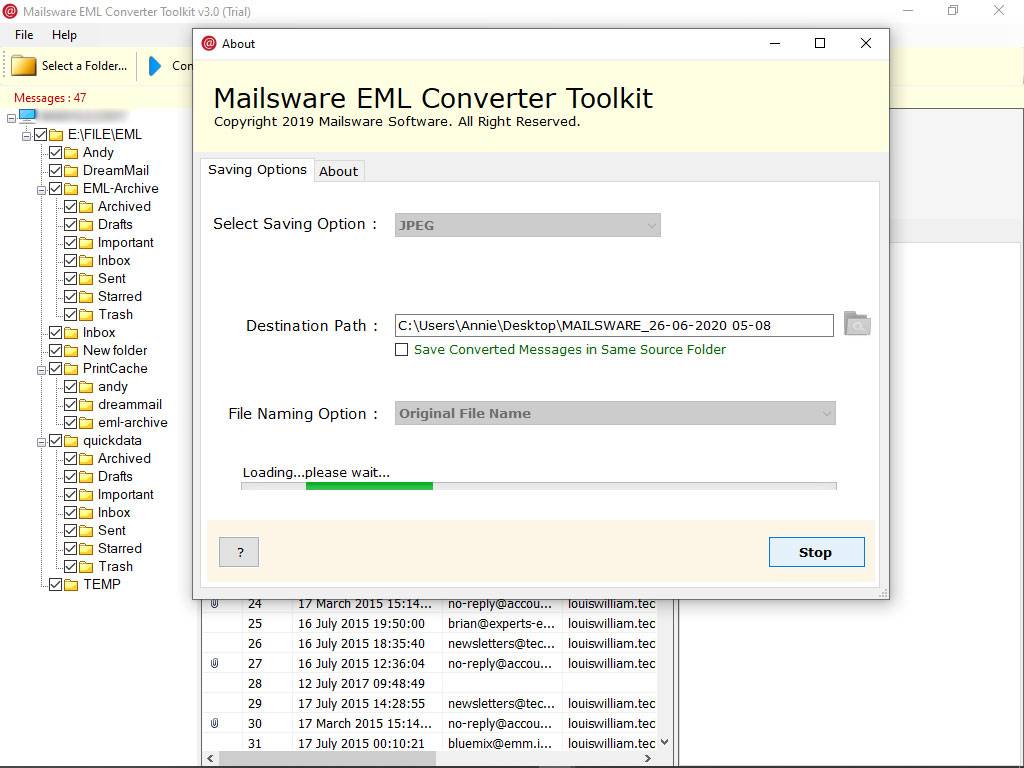WHY IS MOBILE APPLICATION DEVELOPMENT SO POPULAR?
The use of smartphones has been increasing every single day and the technology is improving both on the front end as well as the back end. As mobile devices are enabling businesses to reach larger audience and stay connected with the customers easily, the trend of mobile apps has grown in the business sector as well. Having said so, other companies have their audience in mobile apps, for example social media, or photo & video editing apps or entertainment content providers.
The current tech evaluation has been moving with more speed as it has new and affordable technologies in mobile device’s hardware, mobile network as well as servers. This has made it possible to develop much complex apps with a better user experience and generated a lot of new use cases world wide.
From a business perspective, it’s straightforward to implement business specific features and deliver superior user experiences while also addressing critical security concerns. Businesses can enhance customer trust and foster long-term relationships ensuring data protection complying with privacy regulations.
It is the same scenario from a financial perspective as the new tech mobile apps have become a lot more cost effective to achieve a lot of tasks in all aspects of business. As the demand increased, the advanced technology and the new era of cross platform app development came into existence. This not only reduced the time to market but it is also a cost effective option for both the development and maintenance.
WHAT IS CROSS-PLATFORM APPLICATION DEVELOPMENT?
Cross platform app development is a new age development method which is compatible across multiple operating systems, mainly Android and iOS. There are mainly 2 methods of mobile app development, Native App development and Hybrid or Cross platform app development. Native app development is focused on developing app in the natively supported technology of the operating system wherein hybrid or cross platform app development is focused on developing a single code base which can run on multiple devices.
NATIVE APP DEVELOPMENT
It is a traditional development method with more control over the platform specific facilities. Comparatively, native app development provides better user interface and enhanced user experience compared to hybrid or cross platform app development. Native app development also allows easy implementation of security features ensuring data security. However, this factor is becoming normal in cross platform app development as well.
In light of these considerations around native apps, attention now turns towards an alternative method known as hybrid app development or cross platform app development.
HYBRID APP DEVELOPMENT
As businesses wanted to explain their reach on multiple devices, the usage of hybrid apps developed started increasing. Hybrid mobile app development has the elements of both a web as well as the native app development. The concept has app scalability as the foundation which enables businesses to expand their reach across multiple platforms with a single codebase. It is very essential to provide offline app usage in areas with limited internet connectivity that most of hybrid app development offers.
As Flutter and React Native grew and the community increased, security measures became integral within hybrid apps, ensuring data protection through stringent encryption methods. Furthermore, API integration becomes seamless due to the uniformity of the codebase across different platforms. Cost efficiency is yet another advantage as developers need only maintain one version of the code.
The growing popularity and efficiency of hybrid app development set the stage for innovative technological solutions such as Flutter’s inception into this dynamic domain.
THE HISTORY OF FLUTTER
Google introduced the concept of Flutter, an open-source UI software development kit in 2015 to provide developers with a new way to build natively compiled applications for mobile, web and desktop from a single codebase. Team of engineers from Google made a significant contribution in the evolution of Flutter and its architecture. Dart was chosen to be the programming language foundation of Flutter.
The selection of Dart was instrumental in shaping Flutter’s distinctive features. Dart was also developed by Google and provides support for object-oriented concepts that enables a flexible and expressive user interface design. Moreover, it offers superior performance due to its ahead-of-time compilation nature which made it very much easy for developers to adapt it.
As the architecture of Flutter is based on reactive programming, it is highly responsive and allows developers to have complete control over their applications. It is characterized by composability where every visible entity on the screen is a widget which can be customized according to requirements.
In the first release of Flutter at Google’s I/O conference in 2017, its potential became evident as it offered flexible and strong device compatibility and speed in app development process while maintaining high-quality native interfaces.
Let’s turn the attention now towards another popular framework in cross-platform development – React Native – another product born out of tech giant rivalry, Facebook.
THE HISTORY OF REACT-NATIVE
As we explored the history of Flutter, it is very important to explore it’s counterpart React Native. React Native was developed by Facebook, now Meta, to solve the same issues of Native apps and providing a hybrid architecture to develop cross platform apps.
React Native came into existence in 2013 as an internal architecture and was released for public use in 2015, 2 years before Flutter. This initiative was a significant leap forward in addressing the challenges developers came across when building complex UIs. Although introduced and used as an internal project, their goal was to bring React’s power and flexibility to mobile app development. It was not possible without making it publicly available.
As it was the first significant publicly available infrastructure to develop cross platform apps, React native got a huge community of developers in a short period of time. In a normal scenario, it takes time for a new technology to be adapted by developers but that was not the case with React Native. Reason being, React Native was already used by Facebook for 2 years before its public availability. Developers had a trust on the technology as the already had a giant platform using it. So the whole scenario went the other way around and React Native became an huge success in the very first year.
Do understand, React Native had a lot of publicly available components from the very first day as it was already a matured piece of technology when it launched.
Let’s turn the attention toward how both the technology differs for each other with their comparative strength and weakness.
MAIN DIFFERENCE BETWEEN FLUTTER AND REACT NATIVE
Distinct differences between these two dominating frameworks can primarily be described by their architecture, performance, and the programming languages they use. Flutter’s architecture operates on Dart, a language developed by Google that requires no bridge to communicate with native modules. This approach promotes higher performance speeds compared to React Native.
React Native’s flexibility is another point of difference. It uses JavaScript, which allows for seamless interaction with native components leading to faster time to market. However, React Native also relies on a JavaScript bridge for communication with native modules which might affect its overall performance. However, this is not notable in most of the business applications.
Now when it comes to development speed, both the technologies have significant differences in different aspects. Flutter offers quicker rendering speeds due to its unique design and direct communication method. On the other hand, React Native provides faster coding since it uses JavaScript which is a a widely used language and offers a hot-reloading feature enabling immediate application updates without needing a full restart. So, developers choose between the framework depending on which of the factors mentioned above is more important to them in the type of the project they are working on.
Availability of toolsets further have differences in these two frameworks: while both offer robust toolsets, Flutter’s have a more comprehensive but slightly less mature toolset than.
The toolset of React Native. In terms of UI components variety, React Native has more platform specific components whereas Flutter maintains an extensive widget library facilitating rich customization options.
These details will provide necessary context in the discussion in the next part on the benefits and drawbacks of using Flutter & React Native in application development projects.
PROS AND CONS OF FLUTTER & REACT NATIVE
The analysis of Flutter & React Native definitely has multiple aspects to evaluate including performance, application size, support, knowledge base and community.
Performance and app size are significant aspects to consider in evaluating the suitability of this framework for various projects. Meanwhile, the level of support provided by developers, availability of a robust knowledge base and an active community also hold substantial weight in deciding its overall acceptability and usage.
PERFORMANCE
In terms of performance, both Flutter and React Native exhibit different characteristics that can significantly influence the efficiency and speed of mobile applications. Code compatibility in both frameworks are efficient; however, Flutter with its Dart language offers a slightly better advantage over React Native’s JavaScript.
- It can be found in the analysis Flutter tends to have faster rendering speeds due to its direct communication with the native components. Flutter’s rich UI capabilities provide a smoother rendering process than React Native’s potentially slower Javaacript layer
- Debugging tools in Flutter are more advanced and integrated easily into IDEs which significantly reduces debugging time compared to React Native. However, Both the platforms have easy integration depending on the project requirements and developer proficiency. Flutter’s hot reload feature provides an edge over React Native in many cases.
- The user interface comparison highlights Flutter’s widget-based approach as more flexible than React Native’s component-based one.
- Testing environments are robust across both platforms but vary depending on specific project requirements.
These performance factors contribute to determining the overall size of the application. In terms of performance, it is a tie between Flutter and React Native.
Another critical aspect – how each framework impacts app size.
SUPPORT, KNOWLEDGE BASE AND COMMUNITY
Support systems, knowledge bases and community involvement are critical factors to consider when choosing a mobile application development technology. This helps in the situation where developers are stuck and need out of the box solutions.
React Native, being an older framework with backing from Facebook, has a larger developer network. This results in higher community engagement and more extensive knowledge sharing through online forums, tutorials, and open source contributions.
It’s a tie with reactive native having a slight edge.
APP SIZE
App size plays a crucial role in the choice of technology for mobile application development. Flutter and React Native have differences in terms of app compression and size optimization strategies. Generally, applications developed using Flutter tend to be larger due to the a lot of widgets included into the app package. This may result in higher storage consumption, potentially impacting UX negatively by increasing load time. On the other hand, React Native utilizes native components, leading to smaller app sizes and faster load times.
However, this is not applicable in all the scenarios as there are various techniques to optimize the size of Flutter application without compromising on the functionality as well as the performance.
The next section will explore aspects related to support, knowledge base and community around these two technologies.React Native wins here in general scenarios.
CONCLUSION FROM A TECH STARTUPS PERSPECTIVE
For a tech startup, all these factors discussed above decide on the technology to choose from and will be dependent on the type of project being developed. As discussed, scalability can be achieved more efficiently with React Native as it has a larger community and a bit advanced tooling system. Considering cost analysis, it may be very much based on the personal perspective whether a lean budget aligns more with Flutter’s performance benefits or React Native’s faster development cycles.
The easy availability of a team too plays an important role. In case the startup has a team or a founder with knowledge of a particular language, it will surely make more sense to use the technology in that particular architecture. While hiring a teach partner or outsourcing a project to a company, startups will get more insights on the technology as we have developers in both the technologies so based on the type of the projects and the facilities in the project, team will suggest the best tech stack.
Although, market adaptability is another essential factor in making a selection. Both Flutter and React Native have very large adaptability and upgrades to make sure technology has the pace which can match any complex development. Thus, it is necessary to make an informed decision and a balance between immediate needs and long-term sustainability. Considering figures as the best way to end the topic, a recent survey by Statista shows that 42% of software developers prefer React Native while 39% opt for Flutter.
Niyati is a Digital Marketer & Content Strategist at Ibiixo Technologies PVT. LTD. She takes care of the Digital visibility of Ibiixo. Ibiixo is a US-based company that provides functional solutions for your business to enhance the customer experience. It enriches business with websites and mobile app. Ibiixo works on various niche markets that include Real Estate, Insurance, E-commerce, Social Networking, Jobs and Career, Education, etc. Also, it has expertise in developing Custom Web & Mobile App Clones for various B2B and B2C Platforms like Vacation Rental, Service Marketplace, Social Networking, Real Estate, Educational, Online Taxi Booking, Artificial Intelligence, Augmented Reality, Virtual Reality, Uber for X, etc.

![[Solved] How to Recover Deleted Tasks in Outlook](https://onlinedrifts.com/wp-content/uploads/2020/02/recover-deleted-tasks-in-outlook.png)


